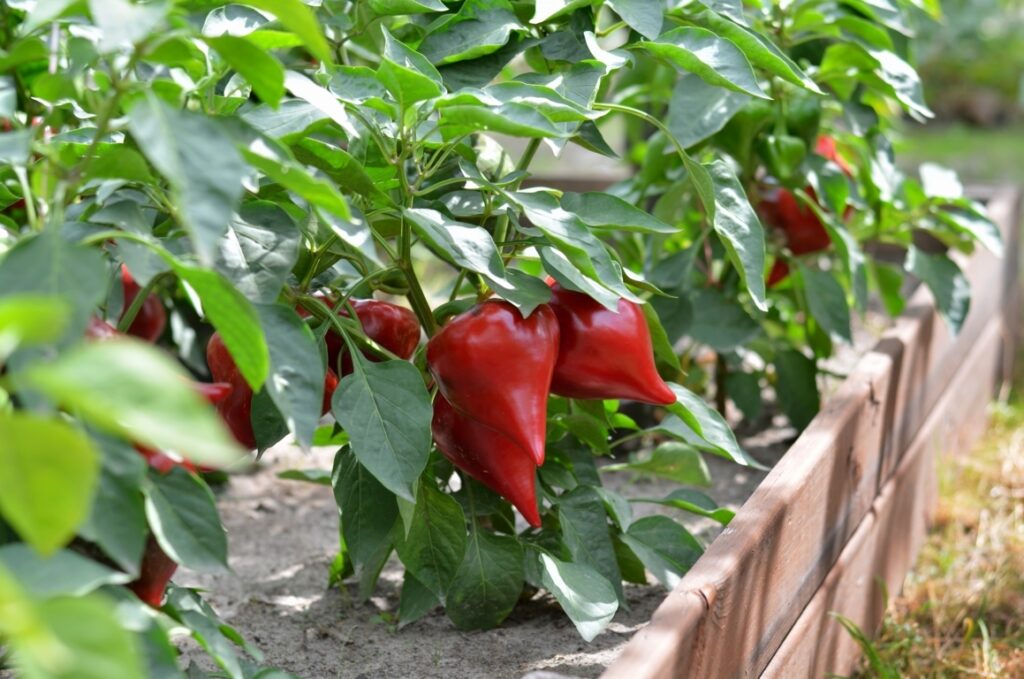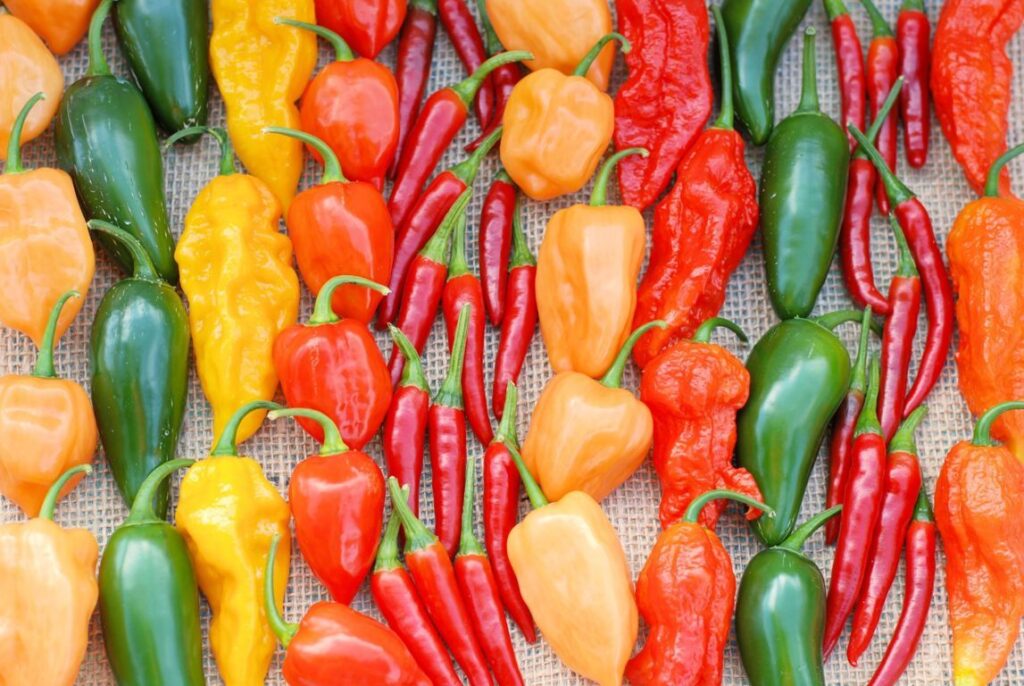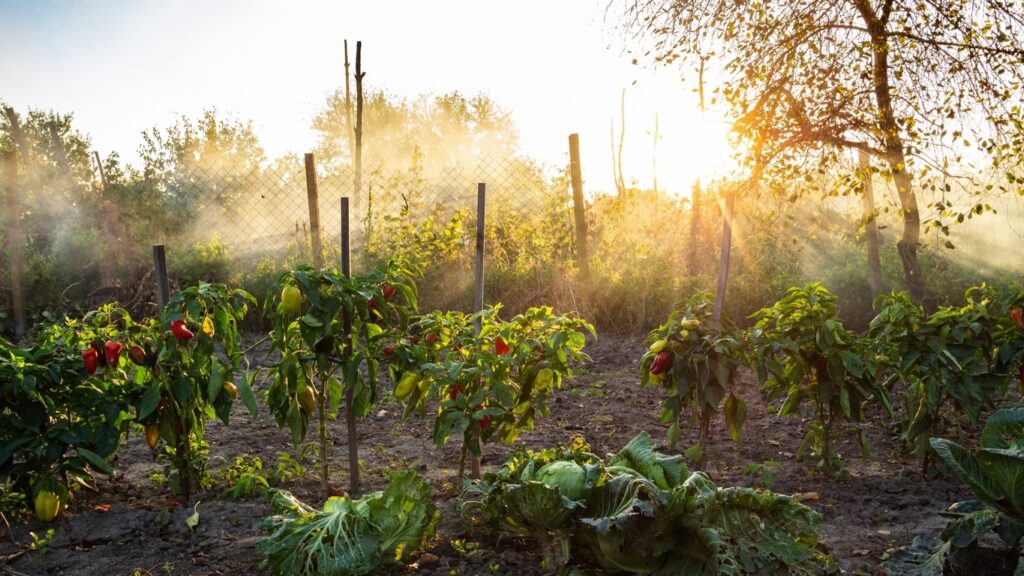
For many folks, peppers are the prize of their summer garden. The bright colors and their variety of shapes, textures and flavors make them wonderfully versatile. Peppers have something to offer every seasoned gardener.
Sweet bell peppers are excellent in salads and freeze extremely well, preserving their delicious essence throughout the cold winter months. Chiles come in varying degrees of heat that makes some good for stuffing, others perfect for soups and stews, while the spiciest are indispensable in condiments like salsa and hot sauce.
However you fancy using your peppers, gardeners ought to know that they will absolutely thrive grown in raised beds. Peppers love to be pampered.
After many seasons of growing peppers, I can honestly say that I have a love/hate relationship with them. I love when they grow big and strong, bearing loads of fresh peppers, but I hate when they do poorly and I end up with a meager, small crop. It took me a while to nail down the reason for such a disparity in results.
It’s crucial for peppers to be started early in the year and given enough time to develop a strong root system well before they’re even transplanted outdoors. Indoor lights and heat mats go a long way in the late winter/early spring months of germination and seedling growth.
To bypass this step altogether, go to a local nursery or farm that grows and sells pepper starter plants. Typically started in nice warm greenhouses, these peppers will be sturdy with strong root systems, more than ready for outdoor planting.
Outside of getting seedlings off to a good start, the most important factor in prolific pepper production I’ve found is planting them in a warm, well cultivated raised bed. Peppers love basking in hot and sunny conditions while spreading their roots through fine, well-drained soil.
Read on to find out how to best accommodate your pepper plants and secure a bountiful supply of their tasty fruit this summer.
How to Space Pepper Plants in Raised Beds

It’s important to ensure that your peppers will have enough space to stretch and grow throughout the season. Not only for the leaves, which can get broad and do love unimpeded access to the sun, but for the roots as well. The pepper fruits themselves will also size up and require a lot of space. It may not seem like it when they’re so small, but they grow quickly, especially when the daily temperatures start to soar.
With that in mind, peppers should be spaced about 12” apart in your raised bed. I like to stagger my rows so that I’m able to pack them in a little tighter, about 8-10” apart. This may be cutting it close for some varieties, but with some staking and a little pruning down the road, extra space can be made.
Ultimately, you should reference the spacing recommended for your particular variety and consider that as well as the available space you have in your garden. Trial and error is a great way to learn, and remember no two growing seasons will be exactly alike.
Planting Peppers: Best Practices
As previously mentioned, peppers can be a little picky when it comes to their living conditions. But, when kept completely content in their raised beds they will shock you with their production. These tips will help you prepare the beds and plant your peppers successfully.

- Fill the raised bed with rich, well-draining soil. Mix in compost before, during and after the growing season.
- The soil shouldn’t be cold when planting your peppers. Clear or black plastic can be stretched over the bed during the spring to hasten the warming process.
- Peppers are very sensitive to change in temperature and light exposure. To prepare them for outdoor living, plants should be gradually “hardened off”. Over the course of a few weeks slowly acclimate your plants to the sun and outside elements. Start on a cloudy day and increase the time in the sun a little bit every day.
- Plant your peppers outdoors once evening temperatures remain consistently above 50 degrees and only when the last danger of frost has definitively passed.
- Consider constructing a hoop house over your bed to shelter the pepper plants during cold evenings. It can also be used in the fall to extend the season.
- Handle peppers very gently when transplanting. Dig the planting hole at least twice as big as the root ball and plant them as deep as possible, up to the first set of leaves. Roots will sprout from any part of the stalk covered with dirt.
- Raised beds should be 12” deep, if not deeper. The more space the roots have to grow, the bigger the stalk, foliage and fruits will be.
- Transplanting is the most stressful ordeal in the process. Make sure the peppers are firmly planted into the bed and watered well immediately afterwards.
Peppers and Their Pals: Companion Plants
While a uniformly planted bed full of peppers is aesthetically pleasing, it’s not always the best for a plant to be completely surrounded by the same species. Plants thrive with diversity and peppers play nice with lots of different types, giving you plenty of options to interplant with.
Strong smelling flowers and herbs work great for deterring pests. Try planting marigolds, nasturtium, basil, oregano, dill or onions along the border of the bed. Or, tuck them in between individual pepper plants if space allows. All of these companion plants will ward off bad bugs and invite beneficial insects.
Tomatoes and eggplant also make great companions to include in your raised pepper bed. They all belong to the nightshade family and will flourish under the same conditions, making care and maintenance a much easier task. They may grow well together, but because of their similarities, may also pass disease among themselves. Solve this problem by simply rotating your nightshade crops, planting them in a different bed from year to year.
What Types of Peppers Grow Well in Raised Bed?
All types of peppers will benefit from the advantages of raised beds. Warm, loose and well-drained soil are the perfect conditions for the entire Capsicum genus.
The popular and commonly grown bell pepper does especially well when planted in raised beds. Plants grow tall, stalks bulk up and the foliage and fruit can really bush out. For the same reasons, other large pepper types like anaheim, poblano and cubano will generate incredible yields.
Let’s not forget about the hot peppers, I know there are many fanatics of fiery flavors out there! Experiment with any type of hot pepper and watch your plants burst with intriguing shapes and colors.
Standards like serrano and jalapenos will produce loads of fruit packed with sweet heat. For those adventurous addicts of capsaicin, why not try something more exotic like cayenne, habaneros, Trinidad scorpions, Carolina reapers or ghost peppers? Just be cautious because these little firecrackers can actually become dangerously hot. Some people will only handle them with gloves and safety glasses!
Hot pepper plants tend to grow more upright and compact so you may be able to pack your raised beds a little more tightly with these.

No matter the variety you’re growing, the fact remains the same: Peppers will thrive in raised beds. Next we’ll discuss some top maintenance tips to keep your plants healthy and happy throughout the season.
Caring for Your Peppers
Assist your peppers during the season; promote vegetative growth and maximize flowering and fruiting by following these tips:
- After transplanting your peppers, apply a layer of mulch. This can be organic material like straw, compost or wood chips or something like landscaping fabric or plastic. Mulch will keep the soil warmer, retain moisture and ease the inevitable struggle against weeds. It also prevents soil from splashing up onto the plant, minimizing the spread of soil-borne diseases.
- Pepper plants should be staked and secured. They do pretty well on their own keeping upright, but as fruit develops the extra support will be helpful. The structure will give them stability. Try bamboo stakes and twine or some sort of trellis or cage.
- Don’t overwater your pepper plants. Grown in a raised bed, moisture is evenly distributed and maintained. Soil should be allowed to dry out in between waterings.
- Prune off low hanging leaves and branches as another way to avoid soil splash. The lowest growth should be 6-8” from the ground.
- Build a small support structure over your peppers. This can be used to drape a shade cloth overhead, providing relief from the sun on sweltering summer days. The same frame can serve the opposite purpose as well. Use greenhouse plastic to insulate plants early and late in the season when cold weather threatens.
- When flowering begins, pluck off the earliest blooms, especially if your plant seems frail and not ready to support loads of fruit. This will send energy back to the roots, establishing a stronger foundation for future peppers.
- Peppers require rich soil, but it’s important not to overfeed. A slow release, granular fertilizer can be applied once or twice during the season. And as the old saying goes “Fertilize weekly, weakly” with a liquid seaweed or fish emulsion fertilizer.
- When peppers begin to develop, don’t wait to pick them! Picking even the small peppers will encourage more flowers to set, leading to a more abundant harvest. Maybe that’s how Peter ended up with so many pecks!

Get Ready to Pick Pecks of Peppers!
By now the benefits of growing your pepper plants in raised beds should be apparent.
The beds warm up earlier in the spring and maintain more heat than the earth itself, keeping cozy conditions for roots well into the fall months.
The loose soil is rich with nutrients and microbes that feed the roots. Pepper plants hate cold, soggy feet and the well-drained conditions are perfect for their roots.
Small structures can even be easily erected to protect them from the cold and inclement weather.
Just think of a raised bed as a private, sauna-like sanctuary for your pepper plants and prepare to pick more than a peck’s worth! Interested in learning more about gardening in raised beds? Check out this article detailing inexpensive raised garden bed ideas.
Frequently Asked Questions (FAQ)
What depth should my raised bed be for planting peppers?
Your raised bed should be a depth of at least 12”, but plant peppers as deeply as possible. The stalk will sprout roots as long as it’s submerged in soil. The lowest set or two of leaves can even be removed to allow for a deeper planting depth.
Should peppers be kept away from certain plants?
As prosperous as peppers can be growing alongside some plants, there are a handful of varieties to absolutely avoid including in your pepper bed. Beans will supply excessive amounts of nitrogen to the soil which can burn your peppers, while broccoli and brussels sprouts will gobble up too much nutrients. Cabbage is incompatible because of different soil types and nutritional requirements.
How often should peppers in raised beds be watered?
It depends. Raised beds do a great job of allowing excess moisture to drain, while at the same time keeping conditions evenly moist. Typically peppers require 1-2” of water per week. Watering well once per week usually does the trick. Daily watering may be needed during times of extreme heat and drought. If you are receiving a lot of rain in your area, chances are the peppers won’t need to be watered at all. Deep, infrequent waterings will promote the development of extensive root systems.
Do peppers require full sun?
Yes! These heat loving plants adore the sun, provided they receive enough water to keep the roots hydrated. While they do enjoy basking in the sun’s rays, pepper plants may benefit from a little heat relief during the peak of the hottest summer days. A little afternoon shade is usually welcomed on excessively hot and sunny days, but not necessary. If you see your plants drooping in the afternoon heat, make a tent or tunnel of shade cloth to give them a break.



